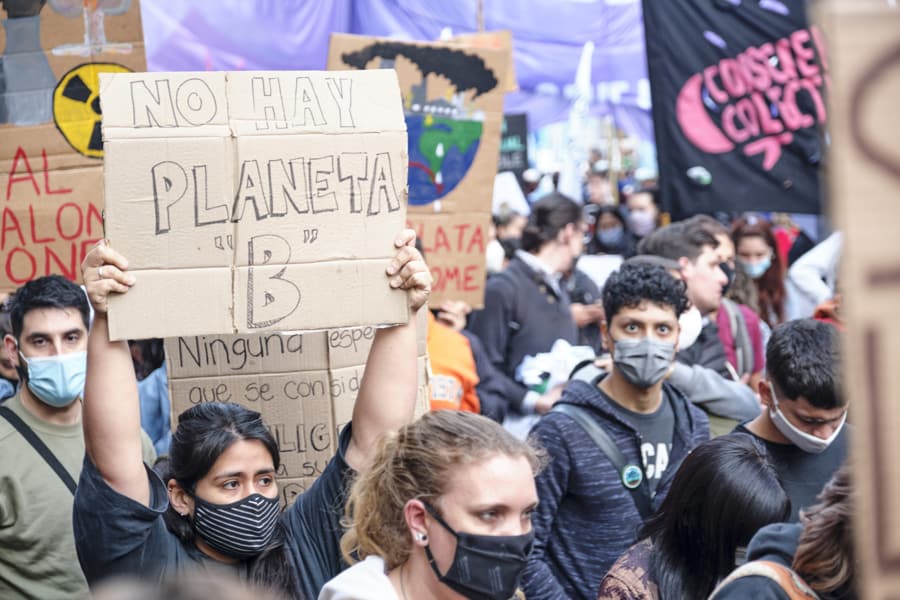Now is an opportune moment to acquire knowledge of the circular and solidarity economy. It's a growing trend that is helping to create a circular society that is aware of the discourse and has viable consumer options to reduce environmental degradation. A circular economy creates resource efficiency by repeatedly reusing and recycling materials. By doing this, we can help reduce waste and help to protect our environment.
If you're interested in learning more about the benefits of the circular and solidarity economy, continue reading! In particular, we'll discuss recycling management, sustainable innovation, and how solidarity and what I think of as "regenerative manufacturing" work together in sustainable business to describe a complete social circular economy.
The concept of a circular society is gaining traction, emphasizing the importance of generating resources we can reuse and recycle again and again. This approach promotes sustainable and eco-friendly practices to reduce impact.
1: The Circular Society in Action
There are many ways in which companies can implement sustainable economic principles into the layers of their businesses. Companies can improve efficiency, reduce waste, and protect the environment by learning about how it works. One of the ideas is that economic development can be achieved and environmental degradation can be curtailed by reducing the number of raw materials that go into production. This resource efficiency reduces resource scarcity and cuts down on greenhouse gas emissions
2: Solutions for Small Businesses
Starting a small business can be challenging, but it's also a great opportunity to explore new ideas and practices. If you are a physical product business, wins in resource efficiency will increase your profits. One way to make your business more sustainable is to adopt a circular economy model. If your business is not purpose-built for the preferred green practices, though, there are other ways to mitigate or offset your impact, including our solution here at Support4Good.
The social and solidarity economy is a concept that emphasizes the need for economic systems that are more equitable, sustainable, and resilient based on principles of cooperation, solidarity, and social justice.
This economic model focuses on redistributing wealth and resources so that everyone in the community can access basic needs like food, housing, education, health care, and other essential services. It also promotes creating jobs and businesses owned by the community and providing meaningful work. The circular economy is closely related to solidarity since it promotes more efficient use of resources to reduce waste and increase productivity.
But how does a social and solidarity economy work together in the environmental discourse?
Economic circularity and solidarity have much in common and are complementary approaches to sustainable development. Sustainable development might be a loaded term, but economic growth is necessary in a world that will grow by almost 2 billion people in the next thirty years.
The circular economy focuses industry on designing, producing, and consuming goods and services in a manner that keeps resources in use for as long as possible by eliminating waste and pollution. The solidarity economy is a set of social, economic, and environmental practices that promote self-management and cooperative models of production and consumption. It works to strengthen communities by redistributing wealth and power.

These two approaches complement each other by aiming to create a more equitable, just, and sustainable society through economic models that reduce waste, invest in local communities, and ensure the rights of all people. Support4Good's nonprofit partner mix is a blend of these two approaches.
In the old linear economy model, there was virtually no thought of sustainability. That paradigm was a mythologized world where resources were infinite, and an all-powerful God (that could not save people from unthinkable suffering and injustice) gave the most devout (and ruthless) humans "dominion over the earth."
Our favorite green economic model seeks to correct this distorted view of reality, which is essential to achieving sustainability, protecting our environment, and ensuring green growth for future generations. After all, there is no planet B.
Choosing resources and materials for their resilience, durability, or molecular predisposition for reuse helps to reduce the amount of waste that is produced and conserve natural resources.
Also, it can increase economic growth and create jobs in industries that focus on sustainability. Furthermore, it can help to reduce emissions, improve air quality, and reduce our dependence on fossil fuels. To put it simply, this kind of economy is for our future and the health of our planet. (OECD, 2018; Ellen MacArthur Foundation, 2018; World Economic Forum, 2019).
A circular society is a part of achieving resource efficiency and protecting our environment. It helps to reduce waste and extend the lifecycle of precious resources. Further, it can help reduce emissions and our dependence on fossil fuels and improve air quality. It is important to note that these societies are innovative and create new jobs in industries that focus on sustainability, as well as increase economic growth. Ultimately, the circular economy is for our future and the health of our planet.
Part of being citizens of a social and solidarity economy is to vote with our purchases, so it's an important aspect of the cultural and environmental discourse to choose retailers participating in the reformist circular society themselves. Here are a few examples.
1. Patagonia: This outdoor apparel company uses recycled materials to fabricate its products. They also have a robust recycling program for customers to return their used products. These products and the recycling program are both available through their interactive website.
2. Allbirds: This footwear company uses recycled plastic bottles as the primary material for its shoes. They also partner with organizations to close the loop on the plastic waste they produce.
3. The North Face: This outdoor apparel company uses innovative materials and the reuse of existing products to create a circular economy. They also partner with organizations to reduce their overall carbon footprint.
4. The Renewal Workshop: This company specializes in upcycling used apparel. They take donated and used products, clean them, and then resell them at a fraction of the cost.
5. Looptworks: This company specializes in upcycled apparel and accessories. They take materials from used products and transform them into something new and sustainable.
6. TerraCycle: This company focuses on upcycling, recycling, and composting materials that are typically difficult to recycle. They accept donations from consumers and businesses and turn the materials into products.
7. The Renewal Workshop

Recycling is a core part of creating a more sustainable world, and there are so many innovative neighborhood initiatives that are making a difference. Many cities have implemented curbside recycling programs that empower residents to easily separate their recyclables and place them at the curb for collection.
Many communities are also introducing composting programs that can reduce the amount of waste sent to landfills. Finally, some neighborhoods have started using art projects to encourage people to recycle, like using plastic bottles to create sculptures or art installations. These initiatives prove that we can all do our part to help create a more sustainable world.
When refusing single-use plastic at the grocery store, it is important to be mindful of how you approach the situation. A good first step is politely explaining the importance of reducing single-use plastic and its tragic environmental impact. You can also suggest alternatives such as reusable bags or containers.
As a side note, it is important to be respectful of other people’s views, as well as make sure your actions are not offensive. Finally, if you feel comfortable, you can help the cashier by suggesting ways to reduce single-use plastic, such as paper bags or reusable containers. By following these simple steps, you can help reduce single-use plastic while still being respectful and understanding.
We still haven't solved this well-known problem, and that's why major international organizations still prioritize ending single-use plastic use on their agendas.
The idea of fixing and repairing items instead of buying ones is gaining popularity as part of the circular and solidarity economy, which encourages people to reuse and recycle items. This can be a very fun and creative way to keep items in use for longer and reduce the amount of waste going to landfills.
Fixing and repairing items can help extend the life of those resources, reduce costs, and create an enjoyable experience. It also encourages you to express yourself with unique pieces you can customize according to your tastes, giving them a new life.
If you are still learning how to be crafty, here are a few online resources with tutorials that will teach you how to reuse damaged furniture in creative ways.
If we don't implement this paradigmatic shift, undesired outcomes could lead to even more serious environmental devastation than it already has. The circular economy works on a zero-waste model that uses the needed resources for as long as and in as many ways as possible. This means that instead of municipalities sending waste to landfills or burning it (I'm talking to you, Tokyo), it is recycled back into the system and used again.
Without this model, global warming and other issues could worsen due to the lack of resources. Furthermore, the solidarity economy could suffer as it relies on a shared-value approach that connects people and businesses to create sustainable economic systems. Without this, communities would feel the impact of reduced opportunity in their local economies.
The circular and solidarity economy offers an innovative approach to economic development that seeks to reduce waste, create equitable opportunities for all, and ensure that resources get used responsibly and sustainably. This article has highlighted the components of this visionary system, from its underlying principles to its applications in various sectors.
By creating a more sustainable and equitable economic model, the circular and solidarity economy can revolutionize the world economy and provide lasting benefits for generations to come.
: